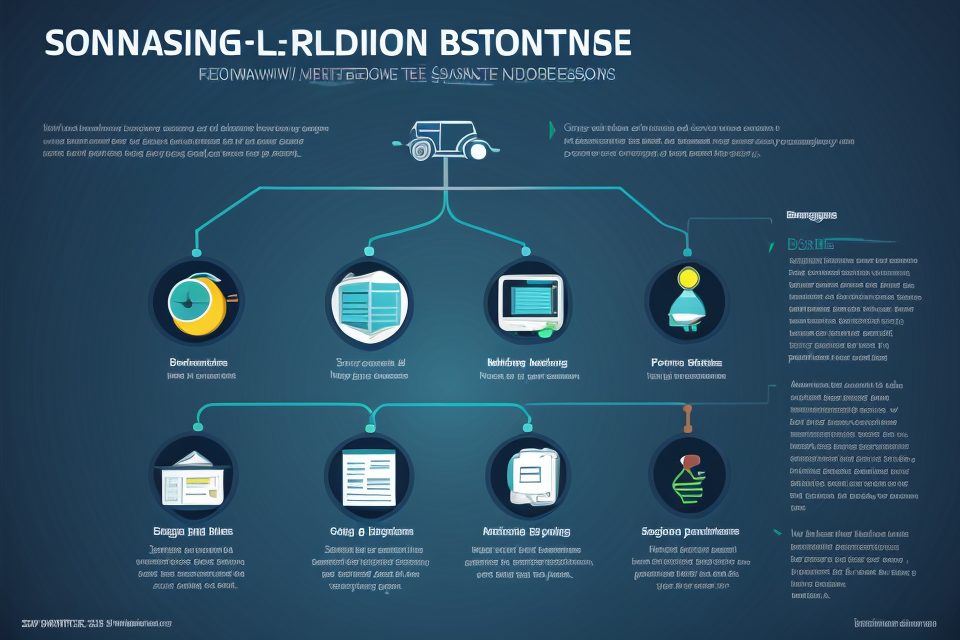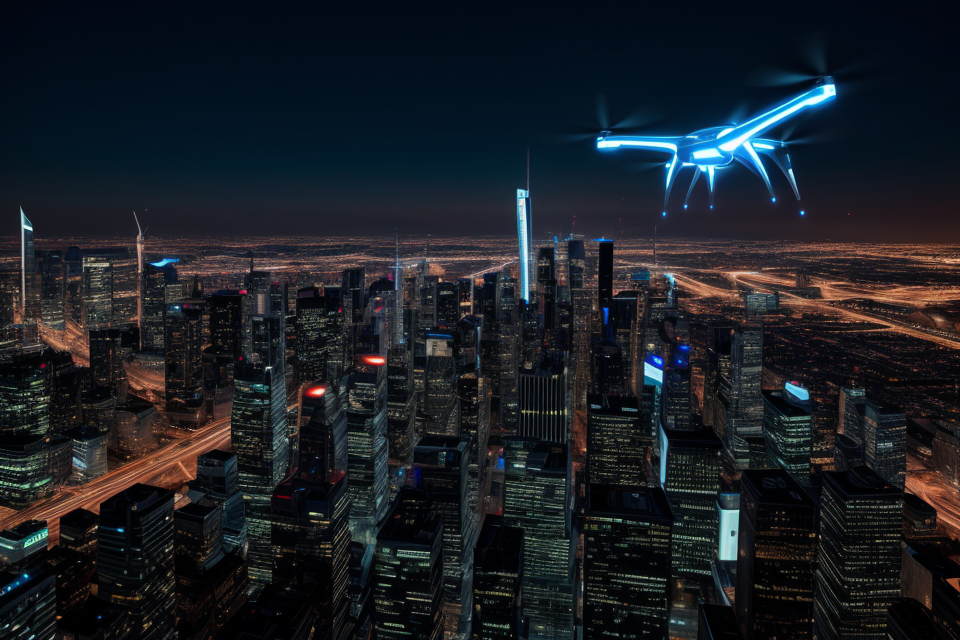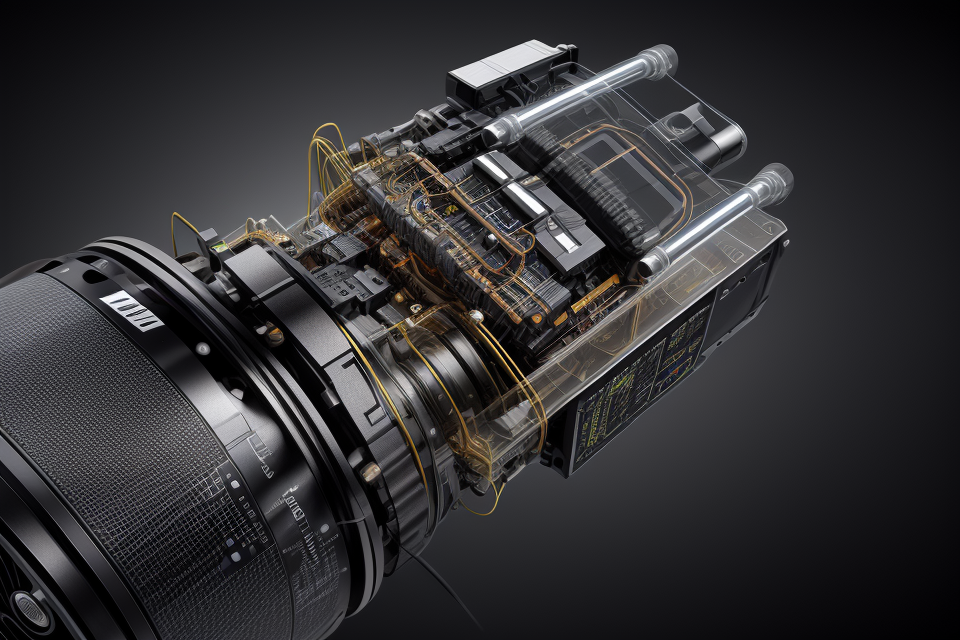
Sensors are a remarkable invention that has transformed the way we live and work. From the humble beginnings of detecting temperature changes to the complex systems used in space exploration, sensors have become an integral part of our lives. They are used in various industries, from healthcare to agriculture, transportation to entertainment, and have made it possible to collect data and gain insights that were previously unimaginable. The potential applications of sensors are virtually limitless, and in this article, we will explore some of the most exciting and innovative ways sensors are being used today.
What are Sensors?
Understanding the Basics
Definition of Sensors
Sensors are devices that detect and respond to physical inputs, transforming them into digital signals that can be processed by electronic systems. These inputs can range from temperature and pressure to light and sound, and sensors are found in a wide variety of applications, from consumer electronics to industrial automation.
How Sensors Work
Sensors work by converting physical phenomena into electrical signals. This is typically done using transducers, which are devices that can convert one form of energy into another. For example, a temperature sensor might use a thermocouple, which generates a voltage that is proportional to the temperature difference between two points.
Types of Sensors
There are many different types of sensors, each designed to detect specific physical phenomena. Some common types of sensors include:
- Temperature sensors, which measure the temperature of a system or environment
- Pressure sensors, which measure the pressure of a fluid or gas
- Light sensors, which measure the intensity of light in a given area
- Sound sensors, which measure the intensity of sound waves in a given area
- Motion sensors, which detect movement or vibration in a given area
- Proximity sensors, which detect the presence of nearby objects without any direct contact
- Gas sensors, which detect the presence of specific gases in the air
- Humidity sensors, which measure the amount of moisture in the air
- Inclination sensors, which measure the angle of inclination or orientation of a device or system.
Applications of Sensors
Sensors have become an integral part of our daily lives, finding applications in a wide range of industries. Their versatility and ability to gather data from the environment have made them indispensable in various fields. In this section, we will explore some of the most common industries where sensors are used.
A Wide Range of Industries
- Healthcare: Sensors have revolutionized the healthcare industry by enabling the development of medical devices that can monitor patients’ vital signs remotely. Continuous monitoring of patients’ vital signs, such as heart rate, blood pressure, and oxygen saturation, can help detect anomalies early and prevent serious health issues. For example, wearable fitness trackers can monitor heart rate and other physiological parameters during exercise, helping athletes optimize their performance.
- Agriculture: Sensors have transformed agriculture by enabling farmers to monitor and manage their crops more efficiently. Sensors can measure soil moisture levels, temperature, and humidity, allowing farmers to optimize irrigation and improve crop yields. In addition, sensors can detect pests and diseases early, enabling farmers to take preventive measures to protect their crops.
- Automotive: The automotive industry has embraced sensors to improve vehicle safety, performance, and efficiency. Sensors can monitor various parameters, such as speed, acceleration, and braking, and provide real-time feedback to drivers. Advanced driver assistance systems (ADAS) use sensors to detect obstacles, pedestrians, and other vehicles, preventing accidents and enhancing safety.
- Manufacturing: Sensors have become an essential component of the manufacturing process, enabling real-time monitoring of production lines and quality control. Sensors can detect defects, monitor machine performance, and optimize production processes, reducing waste and improving efficiency.
- Environmental Monitoring: Sensors have played a crucial role in environmental monitoring, enabling scientists to collect data on various environmental parameters, such as temperature, humidity, and air quality. This data can be used to track climate change, monitor pollution levels, and inform policy decisions.
- Security: Sensors have become an essential component of modern security systems, enabling the detection of intruders, fire, and other hazards. Motion sensors, security cameras, and other sensors can be used to monitor and secure buildings, facilities, and other critical infrastructure.
Sensors in Healthcare
Revolutionizing Patient Care
Medical sensors
Medical sensors have been a game-changer in the healthcare industry. These sensors are designed to monitor various parameters of a patient’s health, including heart rate, blood pressure, temperature, and more. With the help of these sensors, healthcare professionals can detect any anomalies or changes in a patient’s health status early on, which allows for timely intervention and treatment.
Monitoring vital signs
Vital signs are critical indicators of a patient’s health, and sensors play a crucial role in monitoring them. These sensors can continuously track a patient’s vital signs, providing real-time data to healthcare professionals. This continuous monitoring allows for early detection of any changes in a patient’s health status, which can be critical in preventing complications and ensuring effective treatment.
Remote patient monitoring
Remote patient monitoring involves the use of sensors to monitor a patient’s health status from a distance. This technology has been particularly useful during the COVID-19 pandemic, as it allows healthcare professionals to monitor patients without putting themselves at risk of infection. Remote patient monitoring sensors can track various parameters, including heart rate, blood pressure, oxygen saturation, and more, providing healthcare professionals with real-time data on a patient’s health status. This technology has been particularly useful for patients with chronic conditions, as it allows for continuous monitoring and early detection of any changes in health status.
Sensors in Agriculture
Agriculture is one of the most important sectors that benefit from the use of sensors. Sensors play a crucial role in enhancing crop production, monitoring weather conditions, and facilitating precision farming. In this section, we will explore the various applications of sensors in agriculture.
Enhancing Crop Production
Sensors are used in agriculture to enhance crop production by providing real-time data on soil moisture, temperature, and nutrient levels. This information helps farmers make informed decisions on when to water, fertilize, and harvest their crops.
Soil sensors
Soil sensors are used to measure soil moisture, temperature, and nutrient levels. This information helps farmers optimize irrigation and fertilization practices, which ultimately leads to higher crop yields. Soil sensors can also detect soil compaction, which can affect plant growth and yield.
Weather sensors
Weather sensors are used to monitor weather conditions such as temperature, humidity, and precipitation. This information helps farmers plan their planting and harvesting schedules, and also helps them anticipate and prepare for extreme weather events such as droughts and floods.
Precision farming
Precision farming involves the use of sensors and GPS technology to optimize crop production. Sensors are used to collect data on soil conditions, crop health, and weather patterns. This information is then used to create detailed maps of fields, which help farmers make informed decisions on planting, fertilizing, and harvesting. Precision farming techniques have been shown to increase crop yields and reduce costs.
In conclusion, sensors play a crucial role in enhancing crop production in agriculture. By providing real-time data on soil moisture, temperature, nutrient levels, weather conditions, and crop health, sensors help farmers make informed decisions on when to water, fertilize, and harvest their crops. This ultimately leads to higher crop yields and increased profitability for farmers.
Sensors in Automotive
Improving Vehicle Safety and Efficiency
In the automotive industry, sensors play a crucial role in enhancing vehicle safety and efficiency. They help drivers make informed decisions by providing real-time data about the vehicle’s surroundings, performance, and condition. The following are some of the most common types of sensors used in automotive applications:
Accelerometers
Accelerometers are devices that measure the acceleration forces acting on a vehicle. They are typically installed in various parts of the vehicle, such as the engine, wheels, and suspension. Accelerometers help engineers and mechanics to detect and diagnose any issues related to vehicle handling, braking, and acceleration. By monitoring the acceleration forces, they can identify problems such as worn-out shock absorbers, faulty brakes, or misaligned wheels.
GPS sensors
Global Positioning System (GPS) sensors are used to track a vehicle’s location and movement. They use satellite signals to determine the vehicle’s position, speed, and direction. GPS sensors are commonly used in navigation systems, tracking devices, and emergency response services. They help drivers to avoid traffic congestion, find the shortest route, and maintain a safe distance from other vehicles. GPS sensors can also be used to monitor the location of commercial vehicles, such as trucks and delivery vans, to optimize routes and improve delivery times.
Environmental sensors
Environmental sensors are used to monitor the external environment, such as temperature, humidity, and air quality. They help drivers to adjust their driving behavior based on weather conditions and to avoid dangerous situations, such as driving through flooded areas or in high-wind conditions. Environmental sensors can also be used to detect potential hazards, such as road closures or accidents, and to alert drivers to take alternative routes.
In conclusion, sensors play a critical role in improving vehicle safety and efficiency in the automotive industry. By providing real-time data about the vehicle’s surroundings, performance, and condition, sensors help drivers make informed decisions and take appropriate actions to ensure a safe and comfortable driving experience.
Sensors in Manufacturing
Manufacturing is one of the most important industries in the world, and sensors play a crucial role in optimizing production processes. In this section, we will explore the various types of sensors used in manufacturing and their applications.
Optimizing Production Processes
Quality control sensors are used to monitor the quality of products during manufacturing. These sensors can detect defects, such as cracks or holes, in products and alert the manufacturer to adjust the production process accordingly. Temperature sensors are used to monitor the temperature of machines and equipment during manufacturing. These sensors can help prevent overheating and damage to equipment, which can lead to downtime and lost production. Speed sensors are used to monitor the speed of machines and equipment during manufacturing. These sensors can help ensure that products are manufactured at the correct speed, which can improve efficiency and reduce waste.
Overall, sensors are an essential component of modern manufacturing processes. They help ensure that products are manufactured to the highest quality standards, while also improving efficiency and reducing waste.
Sensors in Environmental Monitoring
Protecting Our Planet
Sensors play a crucial role in environmental monitoring, enabling us to collect data on various aspects of our planet’s health. By measuring and analyzing environmental parameters, we can identify trends, track changes, and take action to protect our planet. In this section, we will explore the different types of sensors used in environmental monitoring and their applications.
Air quality sensors
Air quality sensors are used to measure the concentration of pollutants in the air, such as carbon monoxide, nitrogen dioxide, and particulate matter. These sensors can be installed in various locations, including industrial facilities, traffic intersections, and residential areas. By monitoring air quality, we can identify areas with high pollution levels and take measures to reduce emissions and protect public health.
Water quality sensors
Water quality sensors are used to measure various parameters in water bodies, such as pH, temperature, dissolved oxygen, and contaminants. These sensors are essential for monitoring water quality in rivers, lakes, and oceans, as well as in drinking water sources. By tracking changes in water quality, we can identify pollution hotspots, monitor the effects of climate change, and take action to protect our water resources.
Weather sensors
Weather sensors are used to measure various meteorological parameters, such as temperature, humidity, wind speed, and precipitation. These sensors are essential for weather forecasting, climate research, and disaster preparedness. By monitoring weather patterns, we can predict extreme weather events, such as hurricanes and floods, and take action to protect communities and infrastructure.
In conclusion, sensors play a vital role in environmental monitoring, enabling us to collect data on various aspects of our planet’s health. By measuring air quality, water quality, and weather parameters, we can identify trends, track changes, and take action to protect our planet.
Sensors in Security
Ensuring Safety and Security
Surveillance sensors
In today’s world, security is of utmost importance. One of the most common applications of sensors is in surveillance systems. Surveillance sensors are used to monitor and record activities in a particular area. These sensors can be used in a variety of settings, including homes, businesses, and public spaces.
Motion sensors
Motion sensors are another type of sensor commonly used in security systems. These sensors detect movement in a particular area and trigger an alarm if any unusual activity is detected. Motion sensors can be used in a variety of settings, including homes, businesses, and public spaces.
Smart locks
Smart locks are a newer type of security sensor that are becoming increasingly popular. These locks use sensors to detect when someone is approaching the door and can be unlocked using a smartphone or other device. Smart locks offer a convenient and secure way to control access to a building or home.
Overall, sensors play a crucial role in ensuring safety and security in a variety of settings. From surveillance sensors to motion sensors to smart locks, these devices provide a powerful tool for protecting people and property.
Challenges and Future Developments
Overcoming Obstacles and Advancing Technology
- Data privacy concerns
- The use of sensors in various industries has raised concerns about data privacy and security. As sensors collect and transmit data, it is crucial to ensure that this information remains secure and is not misused. This has led to the development of new encryption techniques and privacy regulations to protect user data.
- Integration with IoT devices
- Sensors play a critical role in the Internet of Things (IoT) by providing real-time data and enabling devices to make informed decisions. However, integrating sensors with other IoT devices can be challenging due to compatibility issues and different communication protocols. To overcome these challenges, researchers are working on standardizing communication protocols and developing sensors that can seamlessly integrate with other IoT devices.
- Emerging technologies such as quantum sensors
- Quantum sensors are a new type of sensor that use quantum-mechanical effects to enhance sensitivity and accuracy. These sensors have the potential to revolutionize various industries, including healthcare, environmental monitoring, and surveillance. However, the development of quantum sensors is still in its infancy, and there are several technical challenges that need to be addressed before they can be widely adopted. These challenges include improving the stability and reliability of quantum sensors and developing new algorithms to process the large amounts of data they generate.
FAQs
1. What are sensors and how do they work?
Sensors are devices that detect and respond to physical inputs, such as temperature, pressure, light, and motion. They work by converting the physical input into an electrical signal, which can then be processed by a computer or other electronic device. Sensors are used in a wide range of applications, from simple home automation systems to complex industrial processes.
2. What are some common types of sensors?
There are many different types of sensors, including temperature sensors, pressure sensors, light sensors, motion sensors, and proximity sensors. Each type of sensor is designed to detect a specific physical input, and they can be used in a variety of applications, depending on their specific capabilities.
3. Where can sensors be used in the home?
Sensors can be used in a variety of home automation applications, such as smart lighting systems, home security systems, and climate control systems. They can also be used in appliances, such as refrigerators and ovens, to monitor temperature and prevent spoilage. Additionally, sensors can be used in fitness and health monitoring devices, such as wearable fitness trackers and smart scales.
4. Where can sensors be used in industry?
Sensors are used in a wide range of industrial applications, including manufacturing, logistics, and quality control. They can be used to monitor the condition of machinery and equipment, detect potential safety hazards, and ensure that products meet quality standards. Sensors can also be used in environmental monitoring applications, such as monitoring air quality and water levels.
5. What are some emerging applications for sensors?
Sensors are being used in a variety of emerging applications, such as autonomous vehicles, virtual reality, and healthcare. They are also being used in agriculture to monitor soil moisture levels and optimize crop growth, and in construction to monitor the structural integrity of buildings and bridges. As technology continues to advance, it is likely that sensors will be used in even more innovative ways in the future.


